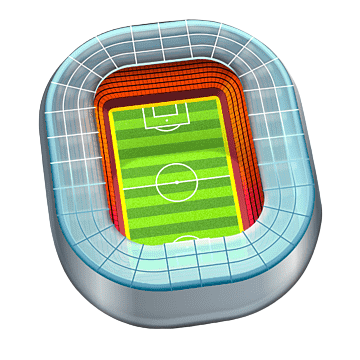Heater Core: Understanding Its Importance in Your Vehicle
페이지 정보
작성자 Rita 댓글 0건 조회 335회 작성일 24-05-10 12:56본문
If you suspect that your fuel pump is failing, it is important to have it inspected by a qualified mechanic. A failing fuel pump can lead to engine damage and potential safety hazards if not addressed promptly.
2. **Electric Fuel Pump**: Most modern vehicles are equipped with electric fuel pumps. These pumps are mounted inside the fuel tank and Cold Start Enrichment use an electric motor to deliver fuel under high pressure to the fuel injectors. Electric fuel pumps are more efficient and reliable than mechanical pumps but can be more costly to replace.
1. Leaks: Corrosion or damage to the heater core can cause coolant leaks, leading to a loss of heating capacity and potential damage to the interior of the vehicle.
2. Clogs: Deposits or debris in the coolant system can clog the heater core, restricting the flow of hot coolant and reducing the effectiveness of the heating system.
3. Air bubbles: Air trapped in the cooling system can prevent the proper circulation of coolant through the heater core, resulting in insufficient heating.
For those looking to enhance their vehicle's performance or aesthetics, upgrades to wheels, steering, and suspension can make a significant difference. Upgrading to high-performance wheels, improving steering response with aftermarket components, or installing a sport-tuned suspension kit can enhance the driving experience and provide a personalized touch to your vehicle.
Maintenance and Upkeep:
To ensure the drivetrain operates smoothly and efficiently, regular maintenance is essential. This includes checking and changing transmission fluid, inspecting driveshafts and axles for wear, and ensuring the differential is properly lubricated. Any unusual noises or vibrations from the drivetrain should be promptly addressed by a qualified mechanic to prevent further damage.
1. **Mechanical Fuel Pump**: Traditionally found in older vehicles, a mechanical fuel pump is driven by the engine's camshaft or timing belt. These pumps use a diaphragm or plunger to draw fuel from the fuel tank and deliver it to the carburetor or fuel injectors.
Introduction:
The drivetrain is an essential component of any vehicle, responsible for transmitting power from the engine to the wheels. Understanding how the drivetrain works is crucial for ensuring optimal vehicle performance and efficiency. In this guide, we will explore the different types of drivetrains, their components, and how they function.
The primary function of engine oil is to lubricate the moving parts of the engine, reducing friction and preventing wear and tear. Over time, the oil in your vehicle becomes contaminated with dirt, debris, and other impurities. If not changed regularly, old and dirty oil can lead to a host of problems, including:
The frequency of oil changes depends on several factors, including the type of oil used, driving habits, and the age of the vehicle. As a general guideline, most manufacturers recommend changing the oil every 5,000 to 7,500 miles or every 6 months, whichever comes first. However, it's essential to consult your vehicle's owner's manual for the manufacturer's specific recommendations.
These small, yet essential parts play a significant role in ensuring safe and comfortable driving experiences for motorists. In this article, we will delve into the functions of wheel bearings, common signs of wear and tear, and the importance of regular maintenance.
How the Heater Core Works:
When you turn on the heating system in your vehicle, a blend door within the HVAC system directs air over the heater core. The hot coolant flowing through the core transfers its heat to the air, which is then distributed into the vehicle's interior through the vents. The blower fan helps to circulate the heated air, providing warmth to the occupants of the car.
Maintenance and Upgrades:
Regular maintenance of wheels, steering, and suspension is essential to ensure the safety and optimal performance of your vehicle. Drivers should regularly check tire pressure, alignment, and tread wear, as well as inspect the steering components for any signs of wear or damage. Suspension components should also be inspected for leaks, cracks, or play, and replaced if necessary to avoid compromising the vehicle's handling and safety.
Function of Wheel Bearings:
Wheel bearings are lubricated, sealed components that allow the wheels to rotate smoothly on the axle with minimal friction. They are typically made of high-quality steel or ceramic materials to withstand the intense pressure and heat generated by the wheels' movement. Wheel bearings also help support the weight of the vehicle and absorb shocks from the road surface, providing stability and control while driving.
1. Regularly check the coolant level and quality to prevent corrosion and deposits that can damage the heater core.
2. Have your cooling system flushed and refilled according to the manufacturer's recommendations to prevent clogs and overheating.
3. Check for signs of leaks, such as a sweet smell or dampness on the floor of the vehicle, and address them promptly to avoid further damage.
2. **Electric Fuel Pump**: Most modern vehicles are equipped with electric fuel pumps. These pumps are mounted inside the fuel tank and Cold Start Enrichment use an electric motor to deliver fuel under high pressure to the fuel injectors. Electric fuel pumps are more efficient and reliable than mechanical pumps but can be more costly to replace.
1. Leaks: Corrosion or damage to the heater core can cause coolant leaks, leading to a loss of heating capacity and potential damage to the interior of the vehicle.
2. Clogs: Deposits or debris in the coolant system can clog the heater core, restricting the flow of hot coolant and reducing the effectiveness of the heating system.
3. Air bubbles: Air trapped in the cooling system can prevent the proper circulation of coolant through the heater core, resulting in insufficient heating.
For those looking to enhance their vehicle's performance or aesthetics, upgrades to wheels, steering, and suspension can make a significant difference. Upgrading to high-performance wheels, improving steering response with aftermarket components, or installing a sport-tuned suspension kit can enhance the driving experience and provide a personalized touch to your vehicle.
Maintenance and Upkeep:
To ensure the drivetrain operates smoothly and efficiently, regular maintenance is essential. This includes checking and changing transmission fluid, inspecting driveshafts and axles for wear, and ensuring the differential is properly lubricated. Any unusual noises or vibrations from the drivetrain should be promptly addressed by a qualified mechanic to prevent further damage.
1. **Mechanical Fuel Pump**: Traditionally found in older vehicles, a mechanical fuel pump is driven by the engine's camshaft or timing belt. These pumps use a diaphragm or plunger to draw fuel from the fuel tank and deliver it to the carburetor or fuel injectors.
Introduction:
The drivetrain is an essential component of any vehicle, responsible for transmitting power from the engine to the wheels. Understanding how the drivetrain works is crucial for ensuring optimal vehicle performance and efficiency. In this guide, we will explore the different types of drivetrains, their components, and how they function.
The primary function of engine oil is to lubricate the moving parts of the engine, reducing friction and preventing wear and tear. Over time, the oil in your vehicle becomes contaminated with dirt, debris, and other impurities. If not changed regularly, old and dirty oil can lead to a host of problems, including:
The frequency of oil changes depends on several factors, including the type of oil used, driving habits, and the age of the vehicle. As a general guideline, most manufacturers recommend changing the oil every 5,000 to 7,500 miles or every 6 months, whichever comes first. However, it's essential to consult your vehicle's owner's manual for the manufacturer's specific recommendations.
These small, yet essential parts play a significant role in ensuring safe and comfortable driving experiences for motorists. In this article, we will delve into the functions of wheel bearings, common signs of wear and tear, and the importance of regular maintenance.
How the Heater Core Works:
When you turn on the heating system in your vehicle, a blend door within the HVAC system directs air over the heater core. The hot coolant flowing through the core transfers its heat to the air, which is then distributed into the vehicle's interior through the vents. The blower fan helps to circulate the heated air, providing warmth to the occupants of the car.
Maintenance and Upgrades:
Regular maintenance of wheels, steering, and suspension is essential to ensure the safety and optimal performance of your vehicle. Drivers should regularly check tire pressure, alignment, and tread wear, as well as inspect the steering components for any signs of wear or damage. Suspension components should also be inspected for leaks, cracks, or play, and replaced if necessary to avoid compromising the vehicle's handling and safety.
Function of Wheel Bearings:
Wheel bearings are lubricated, sealed components that allow the wheels to rotate smoothly on the axle with minimal friction. They are typically made of high-quality steel or ceramic materials to withstand the intense pressure and heat generated by the wheels' movement. Wheel bearings also help support the weight of the vehicle and absorb shocks from the road surface, providing stability and control while driving.
1. Regularly check the coolant level and quality to prevent corrosion and deposits that can damage the heater core.
2. Have your cooling system flushed and refilled according to the manufacturer's recommendations to prevent clogs and overheating.
3. Check for signs of leaks, such as a sweet smell or dampness on the floor of the vehicle, and address them promptly to avoid further damage.
- 이전글Pocket Option 是一個流行的二元期權交易平台 24.05.10
- 다음글Guide To GSA SER Services: The Intermediate Guide On GSA SER Services 24.05.10
댓글목록
등록된 댓글이 없습니다.






